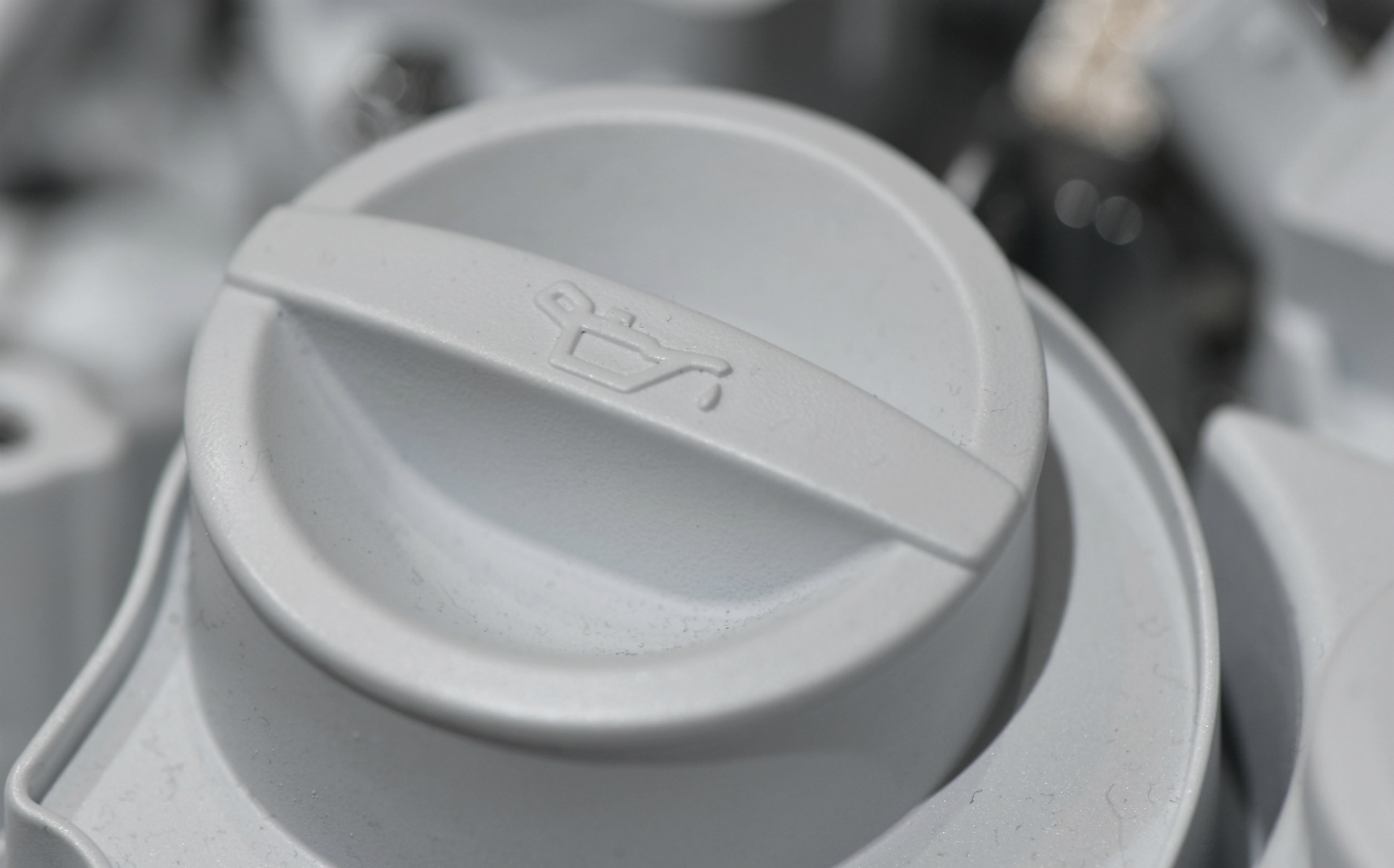Haynes How-To: change engine oil and an oil filter
Born slippy
Sections
- What is engine oil for?
- Which oil does my car need?
- How often does engine oil need changing?
- When should an engine oil filter be changed?
- Disposing of old engine oil
- Step-by-step guide to changing engine oil and the oil filter
What is engine oil for?
An engine is made up of highly stressed, precious components, many of which are thrashing around at great speed. To lubricate and protect the moving parts, manage friction and the build up of heat and keep those precious components clean, engine oil is required.
Because of the differences in design, materials used and the variation in the speed at which components are moving, different engines will often require different grade of engine oil. This is also known as its viscocity, and is essentially a measure of how runny the oil is when cold and when hot. All oils are developed to meet certain viscocity measurements, and car makers will recommend a certain grade of oil to be used with a specific engine.
Which oil does my car need?
Finding out which engine oil a car’s engine needs is simple. Consult the vehicle handbook, or if it’s not available, speak with a reputable garage or the vehicle manufacturer’s customer service department.
How often does engine oil need changing?
As oil ages, its ability to protect an engine deteriorates. At the same time, the oil filter, which is used to capture minute particles of dirt and debris and protect the engine from damage, becomes clogged.
Vehicle manufacturers have recommended service intervals for their models, that specify which tasks should be carried out and when, including changing the engine oil and the oil filter. These can vary, between once every six months or 3,000 miles, up to once every 24 months or around 20,000 miles. To establish the correct intervals for your car, check the vehicle handbook or speak with the car manufacturer’s dealers or customer service department.
When should an engine oil filter be changed?
The oil filter should be changed each time the engine oil is replaced.
Disposing of old engine oil
Oil must be disposed of safely using specialist facilities. Councils’ local recyling centres will have a dedicated container for collecting engine oil.
How to change engine oil and an oil filter
Work time
- Less than one hour
Tools required
- Protective gloves
- Socket set
- Car jack
- Axle stands
- Funnel and container or drip tray for oil collection
Parts that you may need
- Oil
- Sump plug
- Oil filter
Changing engine oil: step-by-step guide

- To help drain as much oil as possible, start the car to warm the engine before you begin work. You don’t want to get it up to full working temperature as the oil, and engine, will become too hot, but just until the temperature gauge starts to move.
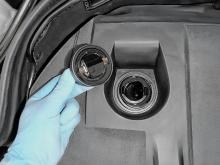
2. Put on protective gloves, open the bonnet, and remove the oil filler cap – this will help the oil drain more quickly. Then, on firm, level ground raise the car using a jack and secure it on axle stands. You will need to work underneath the car, so it’s vital that it is secure and safe. Chocks placed either side of the back tyres can help prevent it moving.
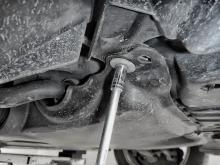
3. Many cars have a large plastic undertray. You may need to remove this to access the sump plug, although some cars have a ‘flap’ or smaller removable section. Check the vehicle handbook, or online if unsure.
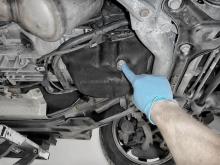
4. Locate the oil sump plug, using the vehicle handbook to help identify the correct part. Place a suitably sized drain container underneath the sump plug. Undo the sump plug with a suitable sized spanner or ratchet. It might be quite tight. Be ready to move the container to catch the oil, and ensure the plug doesn’t fall into the oil container, and that you don’t lose the copper washer.
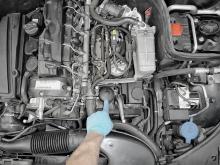
5. Locate the oil filter, which will be either a cannister type or a filter housing with a removable lid. Sometimes they’re accessible from underneath the car, and on some cars access may be from above the engine. Again, the vehicle handbook can help identify its location. Unscrew either the canister, or remove the lid of the filter housing. Oil will also come out of the filter, so be prepared to catch any waste.
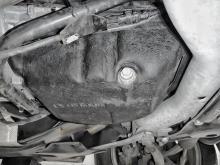
6. When all oil is drained from the engine, replace the sump plug. It’s advisable to use a new item complete with a new copper washer.
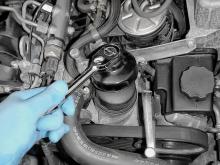
7. Next, refit the oil filter. If it’s the canister type clean the area where it mates to the engine and smear some oil around the black rubber seal. Tighten firmly by hand; DO NOT over-tighten. If it’s the element type, refit the new element and secure the housing lid. It’s likely to be a plastic housing so again, don’t over-tighten.
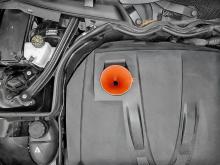
8. Don’t refit the undertray (if fitted) just yet. Before refilling the engine with the new oil, it is essential to check the oil capacity of the car’s engine – adding too much oil can cause catastrophic engine failure.Use a funnel to prevent spills, and always add oil gradually, checking the dipstick (or any digital readout) as you go. Once certain that the oil is at the ‘full’ level marked on the dipstick, replace the oil filler cap on the top of the engine.

9. Start the engine, but do not rev it up. It needs to build oil pressure, which is why the oil pressure light will stay on for longer than usual. It should extinguish within a few seconds. Leave the engine running and check the filter and drain plug for leaks.
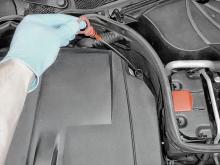
10. If all is well, refit the undertray. Allow the engine to cool a little, and the oil to settle, and use the dipstick to check the level again.
How to remove a stuck oil filter
Sometimes the screw-on canister-style oil filter won’t budge. In such an instance, pull on a pair of rubber gloves (for grip) summon up all your strength and give it a good turn, anti-clockwise.
If it won’t unfasten you’ve got a couple of options. The sensible approach is to get an oil filter wrench. These are generally rubber or metal and grip the canister sides, giving extra leverage without damaging the housing.
Alternatively, if the shops are shut and the job needs to be completed, you could consider driving a long screwdriver through the side of the canister, and use that to hopefully add leverage. However, oil will spill and there’s a chance the metal canister will rip, meaning you’ll need the specialist filter wrench.


